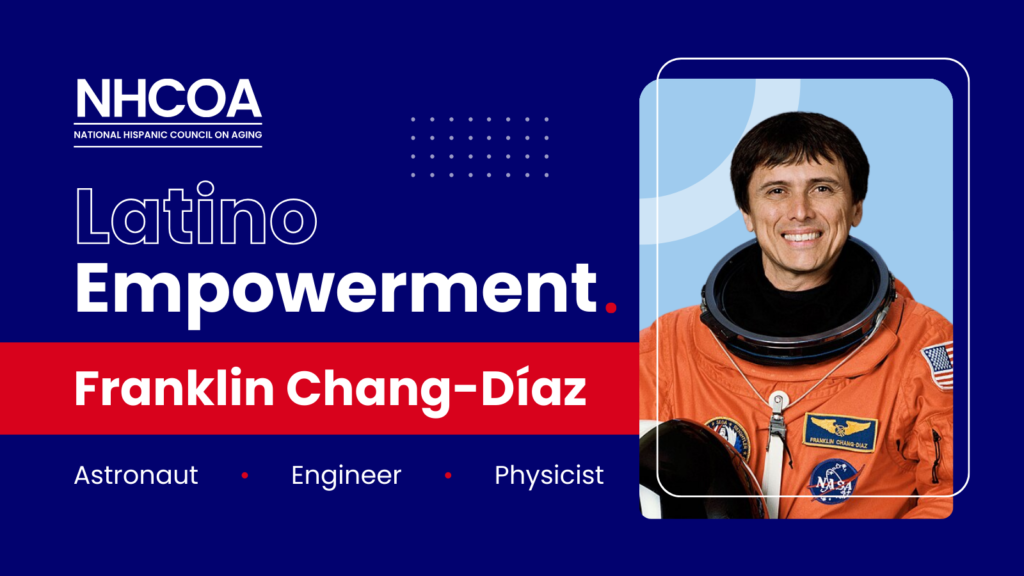
In the United States, astronauts are admired for their bravery and intelligence. We see them as pioneers, sent off on an adventure into space to learn and discover. And because of that, people like Neil Armstrong and Buzz Aldrin have become household names. But do you know who the first Latino astronaut was?
Franklin Chang-Diaz was born in San Jose, Costa Rica, on April 5th, 1950, and would grow up in the Cold War era. At seven years old, Franklin became fascinated with the Soviet Union’s Sputnik satellite, which was launched into space on October 4th, 1957. His imagination ran wild and he was inspired by the idea of working with a crew of astronauts to travel into space.
“I felt one day humans would travel to distant planets, and I wanted to be one of those travelers…” – Franklin Chang Diaz, via the American Physical Society.
By his teenage years, Franklin was well-aware that for him to reach space, he needed to find his way to the United States. At age 13, in 1963, Franklin was undoubtedly aware of President Kennedy’s bold claim that the US would put a man on the moon.
Franklin surely knew the journey ahead of him, and the amount of work it would take to get there. After graduating high school in Costa Rica, he immigrated to the US. Like all immigrants, Franklin faced incredible obstacles. He had to finish high school all over again in the United States, and did so with great difficulty due to the language barrier. But eventually, he learned English with the help of a caring teacher, and began to excel. He graduated from Hartford High School, in Hartford Connecticut, in 1969, the same year that the United States would succeed in landing men on the moon.
After the moon landing in 1969, a lack of funding resulted in NASA canceling its space flight program. Rather than admit defeat, Franklin continued his studies with his goal still in mind. He earned a Bachelor of Science degree in mechanical engineering from the University of Connecticut in 1973. While there, he worked as a research assistant in the Physics Department, helping in the design of high-energy atomic collision experiments.
He then moved on to the Massachusetts Institute of Technology (MIT), where he would continue as part of the US’ controlled fusion program, and eventually he earned his Doctorate in Applied Plasma Physics and Fusion Technology in 1977. In the same year, NASA’s Space Program returned, finally giving Franklin his chance.
Soon after, in May, 1980, Nasa selected Dr. Franklin Chang-Diaz to become an astronaut. He underwent extensive training, became involved in flight software checkout at the Shuttle Avionics Integration Laboratory (SAIL), and he even participated in early space station design studies. In 1983, he served as in-orbit Capsule Communicator (CAPCOM) for the support crew of a space flight. He would then serve as leader of the astronaut support team in the Kenny Space Center, Florida, from 1984 to 1985.
Finally, in 1986, Dr. Chang-Diaz was launched into space as part of the STS 61-C Space Flight. It was a six-day flight, wherein Dr. Chang-Diaz and his fellow astronauts launched a satellite called SATCOM KU, and conducted experiments in astrophysics. The crew made 96 orbits of the Earth before successfully landing at Edwards Air Force Base, California. This mission began on January 12th, 1986, and ended on January 18th.
From 1986 to 2002, Dr. Chang-Diaz participated in seven spaceflights, with a total of more than 1,601 hours spent in space. Of that total, he spent 19 hours and 31 minutes performing space-walks, outside of the space station. He retired from NASA in July, 2005, and proceeded to start his own company, the Ad Astra Rocket Company. His company has a focus on using plasma physics to advance rocket technology, and has developed the Variable Specific Impulse Magnetoplasma Rocket (VASMIR), which is meant to improve upon the time it takes to travel in space, and to allow satellites to make return trips, rather than dying in space after they run out of power.
Dr. Franklin Chang-Diaz is now 74 years old, and remains CEO of Ad Astra.
References:
- “Franklin R. Chang-Diaz, Biography” National Aeronautics and Space Administration. https://www.nasa.gov/former-astronaut-franklin-r-chang-diaz/
- Persaud, Michael. 10/13/2023. “Franklin Chang-Diaz: From Immigrant to Innovator,” National Air and Space Museum. https://airandspace.si.edu/stories/editorial/franklin-chang-diaz-immigrant-innovator
- “APS Careers, Physicist Profile: Franklin Chang-Diaz, Astronaut and CEO,” the American Physical Society. https://www.aps.org/careers/profiles/franklin-chang-diaz

Recent Comments